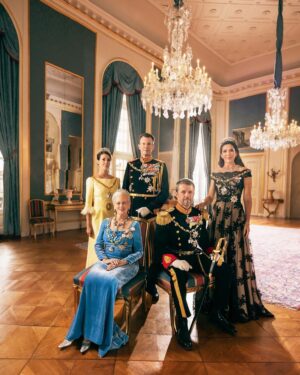The saga of Prince Harry and Meghan Markle has captured the world’s attention, transforming their once fairytale romance into a complex narrative filled with tension and controversy.
From the moment their relationship was made public, they have been under the relentless gaze of both media and public scrutiny.
Their journey, marked by a lavish wedding watched by millions, has since taken a dramatic turn, leading to their departure from royal duties—a decision that reverberated throughout the royal family and beyond.
The couple’s choice to step back from their roles as senior royals was met with a mixed bag of reactions.
For some, it represented a courageous leap towards independence, while others viewed it as a betrayal of the royal legacy and responsibilities.
This pivotal moment not only shocked the public but also exposed the underlying tensions within the House of Windsor.
Questions swirled: What prompted their departure?
How did the royal family react behind closed doors?
These inquiries sparked endless speculation and debate.
Supporters of Harry and Meghan celebrated their quest for autonomy, applauding their bravery in the face of tradition.
Conversely, critics accused them of undermining the monarchy’s image and disregarding its time-honored customs.
This divide reflects broader societal discussions about the relevance of the monarchy in today’s world, as well as the ongoing struggle between preserving tradition and embracing modernity.
The media coined the term “Megxit,” a nod to Brexit, to encapsulate the significance of their exit from royal life.
This label not only highlights the couple’s dramatic shift but also serves as a symbol of change, prompting discussions about the future of the British monarchy.
Their departure brought to light longstanding issues surrounding race, identity, and the monarchy’s role in contemporary society, especially in relation to Meghan’s experiences as a biracial woman within the institution.
Harry and Meghan’s journey within the royal family has been fraught with challenges.
From the constant media scrutiny to the intricacies of family dynamics, they have navigated a complicated landscape.
Their experiences underscore the immense pressure placed on royal family members and the expectations they must meet.
By delving into the historical context and public reactions, we can better understand the multifaceted nature of the hostility directed at them.
The British monarchy has a long history marked by conflict and controversy, and this current rift is merely the latest chapter in its ongoing saga.
Understanding the broader implications of Harry and Meghan’s departure can provide insights into the potential future of the royal family.
Their actions may set a precedent for how future generations of royals navigate their own identities and responsibilities within the institution.
From the outset, Harry and Meghan’s love story seemed to break away from royal conventions, resonating with a diverse global audience.
Their relationship was not just a modern fairy tale; it represented a shift towards a more relatable monarchy.
Meghan, an American actress, infused a fresh perspective into the often-staid world of royalty, making the family more accessible to the masses.
However, their popularity was not embraced by all.
Within Buckingham Palace, there were murmurs of concern regarding their influence.
Traditionalists worried that the couple’s global appeal could disrupt the established hierarchy of the monarchy.
This tension highlighted a generational divide, as Harry and Meghan’s ability to connect with younger audiences posed questions about the monarchy’s relevance in a rapidly evolving society.
As they began to use their platform for social advocacy—championing causes like racial equality and mental health—the couple further stirred unease among royal traditionalists.
Their willingness to speak out on pressing issues marked a departure from the monarchy’s typically apolitical stance, creating friction within the royal family.
The clash between upholding tradition and embracing modern values became increasingly evident.
Prince Harry’s fierce commitment to protecting his family from media intrusion has played a significant role in their story.
His awareness of the intense scrutiny that accompanies royal life has only intensified his desire to shield Meghan and their children from the invasive press.
Having witnessed the devastating effects of media attention on his mother, Princess Diana, Harry is determined to prevent his family from experiencing a similar fate.
Both Meghan and Diana faced relentless media scrutiny upon entering the royal family, often crossing the line into harassment.
The parallels between their experiences are striking, highlighting the toxic environment created by the press.
As Harry and Meghan carve out their new path, they strive to provide their children with a sense of normalcy, away from the relentless spotlight of royal life.
By choosing to live in the United States, far removed from royal traditions, the couple seeks a safer and more private environment for their family.
Their journey is not just a personal narrative but a reflection of the broader societal shifts occurring within the monarchy and the world at large.
As they navigate this complex landscape, Harry and Meghan continue to challenge the norms of royal life, leaving an indelible mark on the future of the British monarchy.
